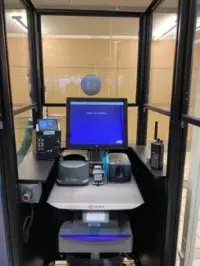TSA highlights new technologies, security checkpoint changes at Spokane International Airport ahead of spring break travel period
With an anticipated spike in the number of people traveling around the spring break period, the Transportation Security Administration (TSA) highlighted its use of new technologies and modified security procedures to help protect the health and safety of travelers departing Spokane International Airport (GEG).
TSA is using computed tomography (CT) technology in the security checkpoint at GEG to screen travelers’ carry-on luggage. The CT scanner applies a sophisticated algorithm during the screening process while an X-ray camera shoots hundreds of images while spinning around the conveyor belt, generating a 3-D image of the item being screened.
The image can be manipulated on screen to allow for a better view of the bag’s contents, allowing a TSA officer to clear the contents of a bag for security threats without having to manually open it for a bag check. Fewer bag checks is beneficial since it reduces physical contact between the traveler and a TSA officer and speeds up the overall screening process. In addition, travelers can leave everything in their carry-on bag, including electronics and food, when it is screened through a CT scanner.

TSA is also using Credential Authentication Technology (CAT) at GEG. These units are able to confirm the validity of a traveler’s photo identification and confirm flight information in near real time. When travelers approach the travel document checking podium when CAT is in use, they may be prompted to insert or scan their own photo identification. This self-service opportunity eliminates the need to hand over photo ID and boarding pass to the TSA officer, reducing potential cross-contamination. CAT units are also able to identify fraudulent documents and those that have been tampered with.
Earlier this year, TSA completed installation acrylic barriers in all of the airport’s security checkpoints. The protective barriers are located in areas where TSA officers typically interact most closely with travelers. These clear shields instill an additional layer of confidence among travelers and TSA employees during the screening process.




